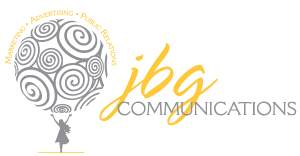By Janice B. Gonzalez
Finding clients isn’t easy. It takes a lot of effort and money, which is why keeping your clients satisfied is as essential as finding them. It costs much less to keep existing clients than it does to constantly compete for new clients. So it makes good business sense to include methods for client retention in your marketing plan. “Clients” refers to people who provide you with business – and this can mean referral sources as well.
One way to keep your clients happy is by staying in touch with them at least quarterly. By communicating with your clients on a regular basis, you will be letting them know that you value their business and you will also ensure that they don’t forget you. Thanks to modern day technology, the electronic newsletter is one way that you can keep your clients informed, even if your budget is limited.
“And how do I do that?” you may ask! There are various templates and services available online. Visit www.microsoft.com and search for an e-mail newsletter template. Once you’ve found one that you like, change the graphics and fonts to your liking and include your information. Other sources include various online services that allow you to create and distribute electronic newsletters using a variety of templates. Make sure that you check with your profession’s regulatory agency’s advertising rules to ensure compliance. Some State Bars, for example, consider newsletters a form of lawyer advertising, and are subject to meet certain guidelines and approval if distributed to the general public.
Keep your newsletter short and simple, and think service, not sales. Include information about you, recent cases or case law, new services, announcements, related news items, tips on how to do things as it relates to your profession, or any other information that you feel will be of service to your clients. Also include information about your company, employee or personal accomplishments. Let your clients know that you are involved in the community and other areas. Add graphics or pictures with captions to help break up the text and create some visual interest. Make sure that it is relevant to the information and that it is tasteful. Never include pictures of others without their expressed consent, and make sure that you have the rights to any graphics that you choose to include.
Make sure you proofread before you send it out. Nothing says “unprofessional” more than a misspelled item. Using your spell check isn’t sufficient. Many words may be spelled correctly, but the context or grammar may be wrong. Ask someone else to look it over before you send it out.
Lastly, include contact information throughout the newsletter. Include it at the top, in the margins and again at the bottom. Be sure to include links to your website as well as an e-mail address. Online newsletter services make it easy for you to track who has read your newsletter and they also ensure compliance of anti-spam rules. If you opt to send out your e-newsletter via regular email, then consider acquiring an e-mail address that will be used only for the e-newsletter to help you keep track of who is reading your newsletter and also make sure that you provide your recipients with an option to unsubscribe.
Start with a simple e-newsletter the first month. Plan to write one quarterly until you feel that you have enough information to publish one monthly. Open a “newsletter file” and gather information as you come across it and save it if you think it will be good for your next newsletter. Then, when it’s time for your upcoming newsletter you will have plenty of information right at your fingertips.
If starting a newsletter sounds too complicated, then stick to the basics. Call your clients, take them out to lunch, drop them a note on their birthday, remember them during the holidays, and treat each client as if they were the most important one. There is a saying, “in order to get what you want (business) you first have to give people what they want (service).” Not only will this simple rule help you retain clients, they will also become great referral sources.
